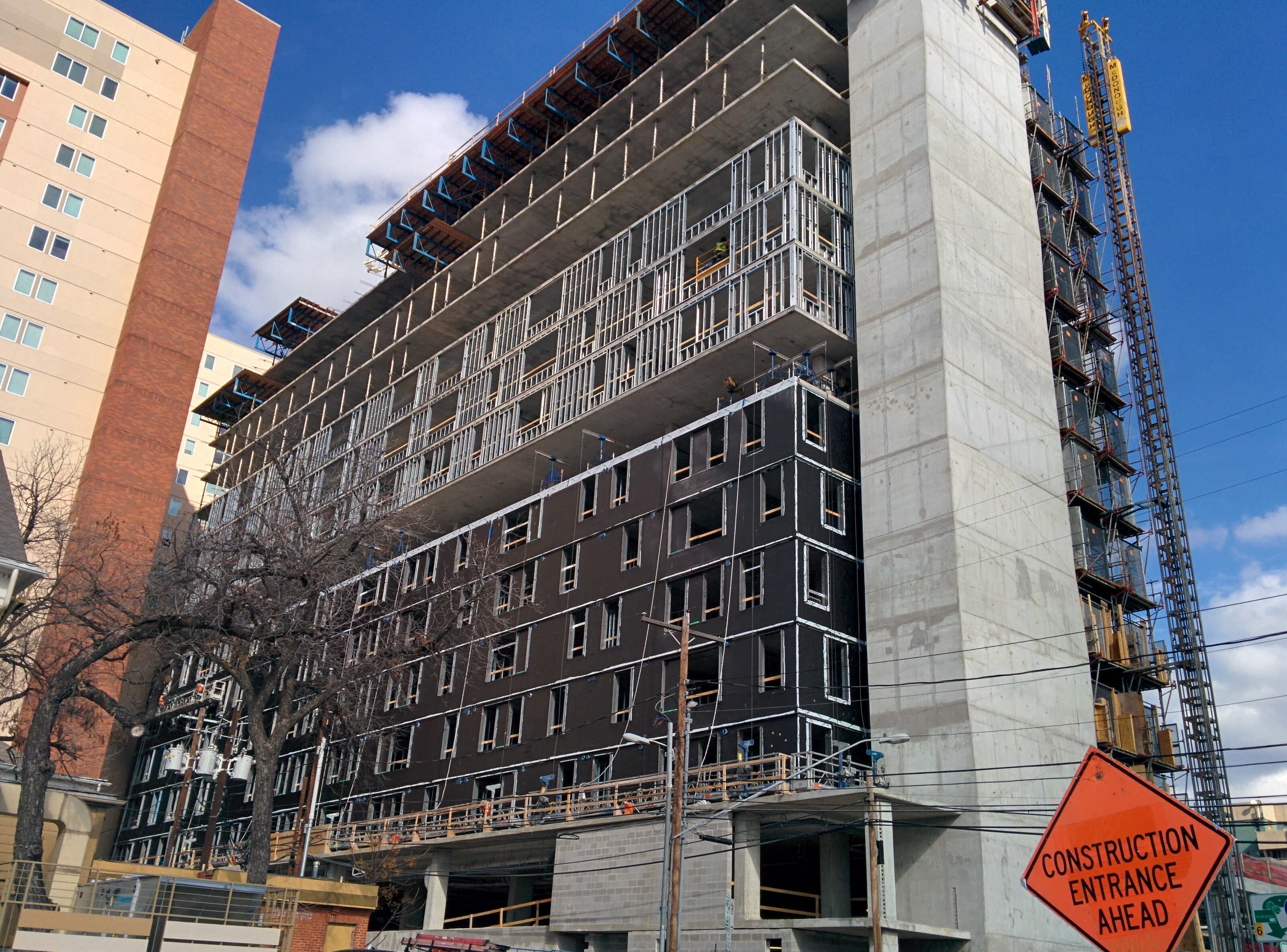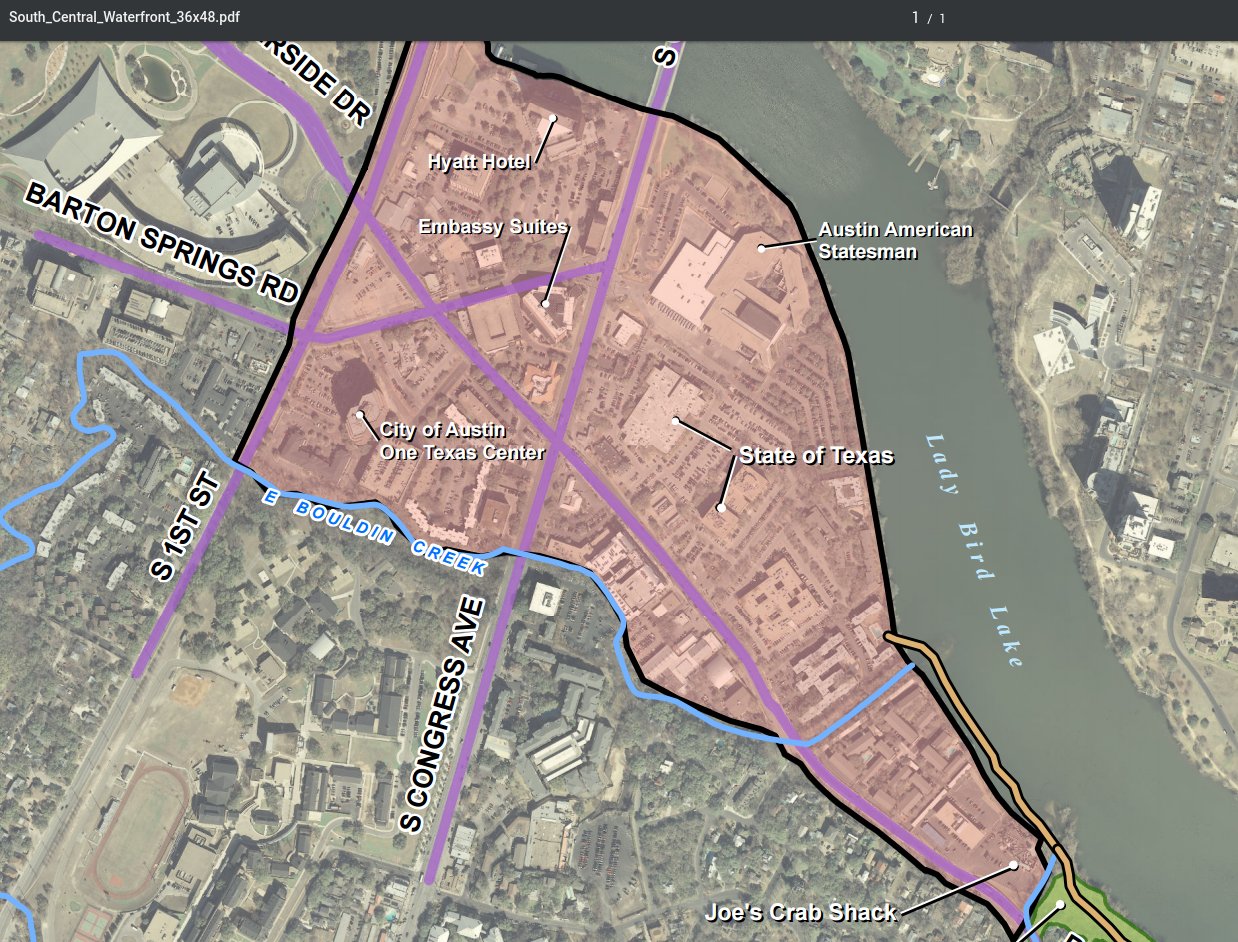Central Austin needs more housing. Prices have been rising, more and more people want to live where they have short commutes but are only able to afford homes near the periphery. We have a long-term plan to alter our land development code that may help with this but our need is now. What options are available to us today?
End Parking requirements in west campus
Every year, West Campus adds more and more dense student housing and along with it, pedestrian amenities like wide sidewalks and street trees. A parking benefit district meters on-street parking with proceeds plowed back into neighborhood improvements. Surveys have shown the vast majority of West Campus students get around without cars. Allowing housing for students without parking could allow denser housing, lower construction costs, or allow more creative buildings that take advantage of unique lots. Removing minimum parking rules has already resulted in a few buildings downtown targeting markets that either don’t need cars or have other places to park them; the same could be even more true in student-rich West Campus.
A parking benefit district meters on-street parking with proceeds plowed back into neighborhood improvements. Surveys have shown the vast majority of West Campus students get around without cars. Allowing housing for students without parking could allow denser housing, lower construction costs, or allow more creative buildings that take advantage of unique lots. Removing minimum parking rules has already resulted in a few buildings downtown targeting markets that either don’t need cars or have other places to park them; the same could be even more true in student-rich West Campus.
Reduce parking requirements near transit routes
The same logic of reducing parking requirements applies outside the student market to apartments near transit routes. More and more people in Austin want to live car-free or car-light. That is easiest to do in buildings created with that lifestyle in mind–a step that can both reduce construction costs and allow room for improving other amenities. Long-term, if Austin wants to be a sustainable city, parking-free typologies should be allowed everywhere. However, in much of Austin, we wrongly treat scarce on-street parking as an endless “commons” rather than managing it as a scarce resource. This means that it may be the wiser path to improve incrementally–iteratively reducing off-street parking requirements, improving on-street parking management, and improving transportation options. Happily, this may also improve an almost universally disliked aspect of Austin’s largest apartment complexes: their architectural monotony.
Implement the Downtown Austin Plan
New high-rise towers are being constructed in downtown Austin all the time–but downtown is more than just the Central Business District. A sleepy section of downtown known as northwest downtown consists mostly of one and two story offices, with a handful of residences and a handful of larger buildings mixed in.  The demand for living in this area is very high: it is adjacent to the university, the central business district, county government, ACC, and Pease Elementary. In 2011, a stakeholder process decided on a measured, middle approach toward developing this area to be more housing-rich, commensurate with the strong demand for downtown living, but without the high-rise towers that characterize downtown. Unfortunately, with no active sponsors pushing for implementation on City Council, this plan has languished. With the heavy lifting already done, it would not be complicated to implement and could result in real gains for those wishing to live downtown but not in high-rise towers.
The demand for living in this area is very high: it is adjacent to the university, the central business district, county government, ACC, and Pease Elementary. In 2011, a stakeholder process decided on a measured, middle approach toward developing this area to be more housing-rich, commensurate with the strong demand for downtown living, but without the high-rise towers that characterize downtown. Unfortunately, with no active sponsors pushing for implementation on City Council, this plan has languished. With the heavy lifting already done, it would not be complicated to implement and could result in real gains for those wishing to live downtown but not in high-rise towers.
Implement the South Central Waterfront Plan
 The South Central Waterfront has added a modest amount of housing in recent years, with the apartment buildings the Catherine and 422 on the Lake acting as an extension of downtown across the river. However, the area as a whole is a mess, from the enormous Statesman offices to the big-parking-lot-and-a-Hooters near the Long Center. Fortunately, the city has been working on a plan that would clean it up, add significant amounts of park land, improve transportation access by improving the street grid and adding trails, and, crucially, free up some land for more and better housing. Implementing this plan would be a great boon.
The South Central Waterfront has added a modest amount of housing in recent years, with the apartment buildings the Catherine and 422 on the Lake acting as an extension of downtown across the river. However, the area as a whole is a mess, from the enormous Statesman offices to the big-parking-lot-and-a-Hooters near the Long Center. Fortunately, the city has been working on a plan that would clean it up, add significant amounts of park land, improve transportation access by improving the street grid and adding trails, and, crucially, free up some land for more and better housing. Implementing this plan would be a great boon.
And Beyond…
Added together, these plans aren’t nearly enough. Austin is a big city and rapidly growing. Unfortunately, it’s growing in many of the wrong ways right now: our houses are sprawling outward, our towers aren’t affordable to most people, and our apartment complexes are monster buildings dominated by parking garages. But this ship can’t turn that fast and it’s time to get turning.
